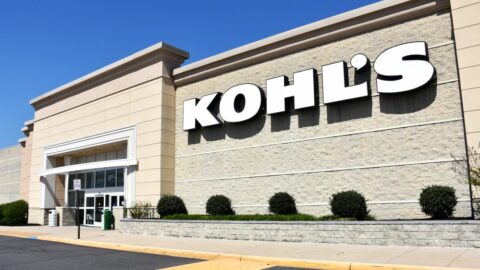By Doug Stephens, President, Retail Prophet
I had coffee recently with a friend who works in the mobile technology sector. We were talking about how much progress had taken place in the mobile industry in the last six months, when he made a comment that really struck me. He said ”Six months is a really long time these days.” and it occurred to me how true that is. Where we used to measure change in business by annual events and fiscal results – we now do so monthly and in some cases even weekly! Things are changing that quickly.
So, rather than add to the parade of annual prognostications, I’ve opted to share what I consider to be a few big ideas that will heavily influence retail over the next 5-10 years. Hopefully by stepping back a little farther, we can gain a better perspective on the events of 2010 and beyond as they unfold.
1. Big Retail Will Fragment
The 25 years preceding 2008 were a retailer’s dream. Robust and predictable demand across a relatively homogenous range of consumer preferences, fuelled by a credit splurge of historic proportions made it tough for retailers to fail. As we move into the next decade, spending patterns are apt to become less predictable. Consumers will become more elusive and fickle in their tastes and preferences. The one-size fits all big box assortment simply won’t meet the needs of increasingly niche, informed and demanding customer sets.
As a consequence, mass merchants such as Wal Mart, Home Depot, Costco and others will have to fragment their broad business models into smaller and more specifically targeted retail concepts, each addressing diverse segments. The vacuous power center locations of today will gradually be broken into a portfolio of smaller suburban formats, downtown stores, Main Street concepts, express stores and state-of-the-art online shops in an effort to maintain market amongst diverse demographic and psychographic consumer groups.
2. Small Retail Will Aggregate
Meanwhile, a simultaneous aggregation will occur. Smaller product, service and retail brands will come together to form large collective value propositions.
Retailers like Sears and Macy’s will relent in trying to resurrect their lethargic brands and will instead leverage the collective power of smaller brands with high consumer equity by leasing almost every square foot of their stores to branded shops. Sephora’s existing shop-in-shop concept and kiosks in JC Penney are a perfect example of the strategy in action. In taking this approach, large players like Penney’s will spread business risk, lower capital requirements, dramatically reduce staffing and training costs and above all, be able to change the brand dynamic in their stores in step with trends and tastes, without having to reinvent the mother-brand every time. Their ability to command premium lease rates for their space will be predicated on their ability to curate the right combinations of brands in-store and in doing so, increase sales for all.
In addition, an emphasis on urban and mixed use development, will drive a reinvigoration of quality local retail coming together to provide pedestrian shopping venues integral to neighborhoods. Such areas will provide fertile retail ground for unique and creative entrepreneurial store concepts that breathe life back into the industry as a whole.
3. Retailers Become Micro-Celebrities
Up until very recently, you needed distribution to drive awareness of your brand. Increasingly it’s entirely the other way around. The ability to easily create awareness through social media and networks will generate distribution opportunities for start-up retail brands. Consequently, our entire concept of how brands develop awareness, distribution and loyalty will change dramatically over the next decade. So too will our expectations of how long a brand can reasonably expect to survive, given the new and lower barriers to competitive entry. In essence, small companies will adopt a “Perez Hilton approach” to building micro-celebrity around their brands through social media and pop-up retail concepts and in the process, fast-track their growth and penetration.
4. Products Search for People
We sit on the edge of developments in search technology that will soon make current search methods and results seem completely archaic. Advancements will enable the personalization of web browsers that learn about their users over time to return more individualized and relevant results. Geography, social networks, age, sex and even purchase habits will influence and personalize the results of search queries.
At the same time, marketers will be able to literally program their messages to ferret out the right consumers for specific products. As brands and consumers become more comfortable with one another in the social space, intricate algorithms will map out paths directly to consumers who index most highly against certain products by virtue of a myriad of dimensions including friendships, occupation and even proximity to distribution. The result will be rapid paths to connection between products and the people they’re designed for.
5. Fully Automated versus Fully Animated Store Experiences
Today, retail is stuck in a purgatory of sorts where the machines aren’t quite human and the humans aren’t quite machines. The result is often disappointing retail experiences. However, the days of human store staff that don’t add value to the retail proposition or the customer’s experience are coming to an end.
Increasingly, consumers will knowingly and happily trade-off between two distinctly different in-store experiences. The fully automated experience will take store staff out of the equation entirely. From personal digital shopping apps, to Radio Frequency Identification (RFID) tagging and mobile payment options, shoppers will transact in 100% self-serve environments. Product information, price checks, online help and store navigation will rest in the palm of the consumer’s hand. Staff will only be required for short periods of time each day or week to replenish or tidy stock. In fact, unmanned, 24-hour stores will become increasingly common. For the majority of routine transactions – fuel, convenience items, groceries, – these types of experiences will actually be widely preferred by consumers.
At the other end of the spectrum will be fully animated experiences where skilled, well-trained staffs work to engage consumers in a rich and very “human” store experience with the highest quality products and store environments. A concierge level of service will be delivered before, during and particularly after the sale and while technology may enhance the experience, it won’t be required to enable it. Staff will be stringently hired and well compensated. Those retailers capable of delivering these high caliber personal experiences will command and receive a premium price for doing so. Make no mistake, this high-fidelity segment will be the smaller of the two from a share of market standpoint but will enjoy a disproportionate share of profit.
6. The Data (finally) Creates Value
If the late 1990s and early 2000s were about advancements in consumer data collection, the new decade will be about it’s effective and meaningful deployment. Major retailers will invest tremendously in turning their vast caches of consumer data into actionable strategy. Fueling the surge is the fact that mobile marketing and point of sale interaction now brings real-time consumer data collection and deployment to an entirely new level.
Because each mobile device is unique, retailers will literally be able to track the patronage patterns of individuals or groups of consumers in their stores. Near Field Communincation between mobile devices and in-store signage in displays will even reveal customer navigation patterns and product interests. Mobile payment technology will close the loop and consumer feedback can be requested within seconds – not days or weeks – of the visit.
Astute companies will actually tell customers things about themselves that assist them in making better, more cost-effective and even healthier purchasing decisions. Experiencing this new reciprocal benefit and added value, consumers will be far more willing to share information with their preferred retailers.
Foresight, Flexibility But Above All…Faith
So, with all this in mind I’ll offer an important caveat to retailers. A percentage of success will always be predicated on the ability to anticipate the future. A greater percentage of success will be linked to the ability to adapt and shift to what wasn’t foreseen. But beyond all else, it’s the willingness to embrace change and hold faith in the future that promotes survival.
Doug Stephens has spent close to 20 years in retail, holding senior international positions in product management, training and development, franchise sales, store design and marketing. And spent several years heading up of one of New York City’s most iconic retail chains. His work and thinking has influenced many of North America’s best known retailers and brands including: Wal-Mart, Home Depot and Disney. Doug is the author of Retail Prophet’s Shift 2020 Retail
Trends Reporta member of Retail Wire Brain Trust. He is also founder of the Retail Prophets industry think-tank – a cross section of retail professionals, authors and educators.












